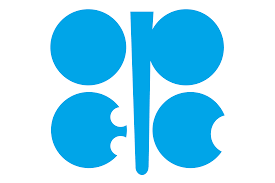In the past three months, oil prices have corrected dramatically as global oil demand eased and concerns about a Chinese slowdown add to a possible European recession. The picture of demand growth may be weakening, but the global supply-demand balance remains tight, and years of underinvestment may bring elevated oil prices for longer.

OPEC has cut its 2022 forecast for growth in world oil demand for a third time since April, Morgan Stanley noted. It expects 2022 oil demand to rise by 3.1 mb/d, or 3.2%, down 260,000 bpd (barrels per day) from the previous forecast. The IEA, on the other hand, raised its forecast by 380,000 bpd to 2.1 mb/d (million barrels per day), but it was mostly updating and moving closer to other estimates from international bodies.
The EIA estimates that United States crude production will rise to 11.86 mb/d in 2022 and 12.70 mb/d in 2023 from 11.25 mb/d in 2021. It expects the U.S. will be close to all-time high production of 20.75 mb/d in 2023.
World oil demand growth in 2022 is revised downwards but still shows a tight supply-demand balance with a rising call on OPEC crude and a growth of 3.1 mb/d in consumption, including “the recently observed trend of burning more crude in power generation” (OPEC monthly oil report).
Global oil demand will likely average 102.7 mb/d by 2023. However. Non-OPEC production is likely to remain stable at 67.5 mb/d with most of the growth coming from the U.S., Norway, Brazil and Canada, according to the OPEC monthly report. This means that the world will have a higher need for OPEC oil and the evidence that massive subsidies have not made a significant impact on the electricity and transport energy mix.
A tighter market with significant geopolitical challenges was made tighter by policymakers’ burdens to investment.
Global oil and gas development capital expenditure has fallen from $740 billion in 2015 to an average of $350 billion according to Morgan Stanley. Underinvestment in development and exploration in energy is now a major problem.
According to Deloitte, the global upstream industry “will need to invest a minimum of about $3 trillion (ex-MENA capex of $2.7 trillion, real 2015 dollars) during 2016–2020 to ensure its long-term sustainability”. This means there is at least a $2 trillion funding gap in the industry if the consider balance sheet requirements, debt maturities and estimated cash flow.
Over the past five years most global energy companies have had to slash investment, in some cases by more than 50%, driven by environmental activism, regulatory and political pressure as well as lower access to credit. Banks have limited the funding of oil and gas due to political and even central bank pressure, as the ECB (European Central Bank), for example, has included environmental requirements in their analysis of banks. Balance sheet challenges and weak cash flow in a low commodity price environment have also reduced the ability of energy companies to fund exploration. In 2011-15, companies would have ample access to equity capital to fund new exploration and development. All that changed dramatically and even state-owned companies all over the world have slashed their capital expenditure commitments.
Interestingly, limiting access to capital to the energy world in developed nations has created more bottlenecks and lower respect for the environment as most of the investment and growth has shifted to countries with lower environmental standards and run by state-owned oil companies.
For years, governments and policy makers have demanded less investment in fossil fuels while relying on cheap energy to sustain economic growth. Now it seems that policy nudging has backfired. As funding has dried up, global oil and gas discoveries in 2022 may end at the lowest level in 75 years, according to Rystad Energy and global inventories remain significantly below the five-year average even with lower demand.
The developed nations policymakers have presented the oil and gas sector the following proposition: We do not want your product. We say we will not use your product in 2030. However, you must invest hundreds of billions of dollars every year to deliver it cheaply and abundantly when we want.
The energy sector must have thought: Where do we sign? Note the irony.
If there is a tight oil market it is not due to lack of resources or opportunities, but due to lower access to capital created by the misguided interventionism in energy policy.
Mr Lacalle,
I am looking forward to your book on the energy markets. (hint, smile, for your free time). You would be very qualified to write one. Daniel Yergin’s books are good but he is a historian.
I also understand the nightmare of getting USA units of oil/energy straight but that is needed. If you convert renewables consumption growth rates and not the bogus “renewables capacity” and compare it to natural gas consumption I think renewables will never catch up let alone surpass natural gas.
Thank you,
Dan Lowe
Breckenridge, Colorado, USA
Hi, you have my book The Energy World Is Flat